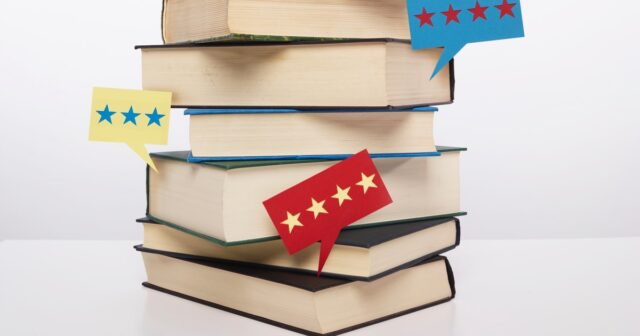First things first, let’s define what a quality book review is.
In a simple way. It is a subjective opinion of a person with value judgments and an emotional component. It can be short or extended and allows for any style and format, but there is no clear structure.
But we will consider another definition. A review is a critical analysis of a work, where the reviewer’s point of view is supported by arguments. Style – artistic, journalistic, scientific. There is a clear structure, there are no unambiguous value judgments. Personal opinion can also be present but always justified. The review can be short or detailed, however, as a rule, it is 2-5 thousand characters – everything that is needed simply will not fit in a smaller amount of text.
Review Structure

There are clear points that need to be highlighted and if you are unsure of your ability to complete them, better use writing services like writemyessay.
1. Bibliographic data
Title, author, year of publication, publisher.
2. Style, genre, a form of narration
Style, genre, a form of narration (prose, poetry, etc.), theme, idea, and what the book is about.
Important
There is no need to completely retell, especially when it comes to new works – spoilers cause anger in many. A concise description of the main storyline (in the case of fiction) or the main idea (regarding scientific, educational, and journalistic materials) is enough.
3. Personal opinion and analysis
Is the topic disclosed, what emotions did the book evoke, what did you like and disappoint, were there any logical inconsistencies, is the nature of the characters clear, etc. Mark everything that is worthy of attention and will help convey impressions. Add your own thoughts: what the work makes you think about, what deep meanings it can hide, and what makes it stand out from other books of the same genre.
4. Advantages and disadvantages
Here, be as objective and unbiased as possible. Even if you didn’t like the book at all, look for good features in it, and if you went with a bang, find something to get to the bottom of. Above all, such an “exercise” develops critical thinking and helps to better understand the work.
5. Conclusion
Personal assessment of the book, who will like it, what it teaches, and what impression it makes. You can immediately compare it with other works of the author: what are the parallels, what is fundamentally different from the rest.
In many cases, the review also includes a description of the cover: hard or soft cover, portrait or landscape orientation, dimensions, weight, color, design, and font size, “newsprint” or coated paper, and the presence of illustrations, etc. All this is true for paper editions. If you read on electronic media, it is impossible to evaluate the book by these parameters.
Review writing algorithm

1. Read the book in its entirety
It would seem obvious, because how do you talk about what you do not know? But remember how many wrote school essays: skimming through the summary or asking a classmate to retell the essence. It’s not good for a review.
It’s better to read twice. The first time is a general acquaintance with the work, the second is a thoughtful reading highlighting important points. Therefore, we advise you to work with a paper format – this way you can bookmark or stick stickers on pages that contain information useful for a review.
2. Write down the main points and bright quotes
With a pen in a notebook or in an electronic document. This is the backbone with which you will work further.
3. Make a clear plan
Make a clear plan, and write down subheadings. Sketch a draft of each section.
4. Re-read the book again and complete the review
If necessary, re-read the book again and complete the review. Let her “rest” for at least a day, subtract with a fresh head and make corrections if necessary.
Book Evaluation Criteria

What can be taken into account when evaluating and analyzing a work? The overall impression of the book is whole, fragmented, powerful, weak, pleasant, and pitiful.
Plot
How logically it is reduced, are there moments that do not work for him, do the lines sag? The narrative can be both dynamic, unhurried, stretched, and torn. To what extent do the dynamics of the narrative correspond to the genre and the tasks set in the book? Is the author deliberately trying to sharpen the plot by twisting the logic of events to please the idea?
Heroes
How detailed and reliable are they described, is their psychology natural enough, and could they do just that in given circumstances? Are these characters sympathetic to the reader, do they cause empathy or disgust?
Psychology of relationships
Do the characters have internal motivations for actions and are there enough of them, do they behave differently or rigidly follow standard reactions?
The main idea of the text
How ethical, smart, and original is it? What does the book teach the reader, and what does it want to tell him?

Originality
How banal is the idea, where did the author borrow what, whom does he quote, parody, paraphrase? If it seems that the book opens a new genre or direction, we will certainly mention it.
Public significance
All of a sudden, the text indicates moments that are useful, say, for patriotic education or national self-consciousness, and describes complex ethical issues and options.
Demand
Whether the topic raised is relevant, whether it is interesting to society, and what audience the book is intended for.
The place of the book in the literary process is how a particular work relates to others in its genre, and what trend it marks, develops or completes.
Your feelings
Whether you liked it or not, what feelings and thoughts aroused, and whether you wanted to buy it or leave it in your home library.
It is not necessary to analyze all the points, we choose those that are important to us at the moment.












